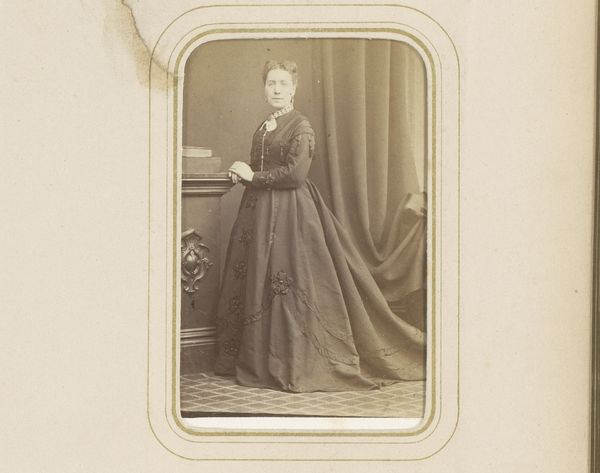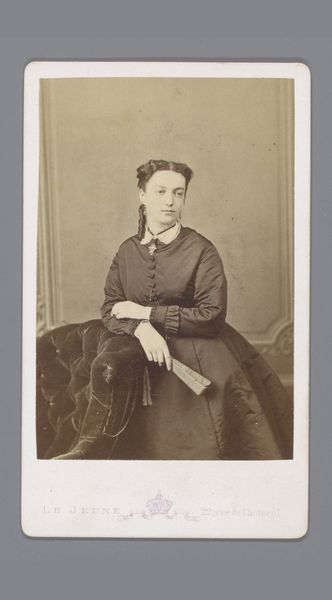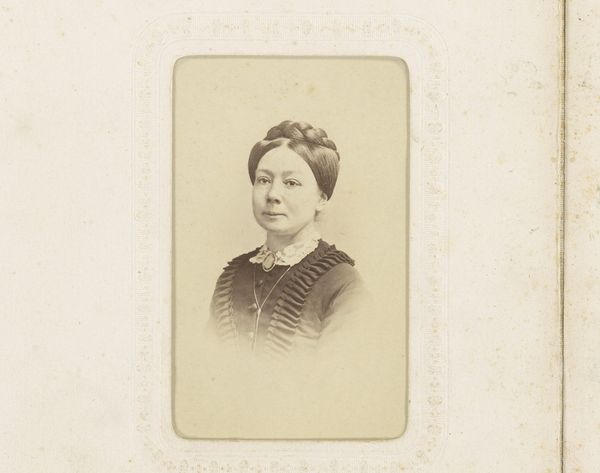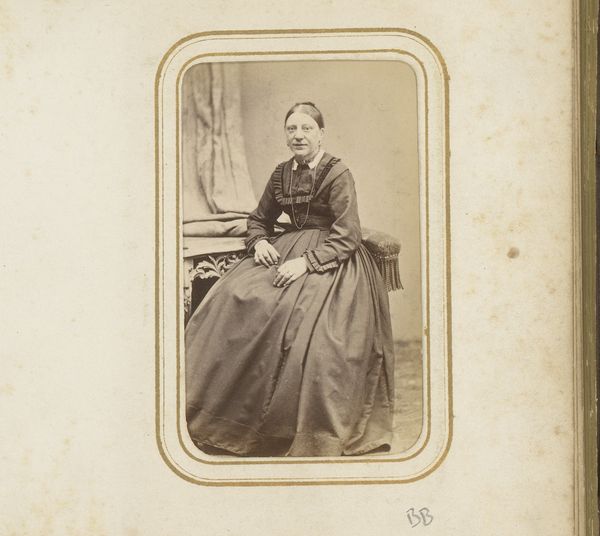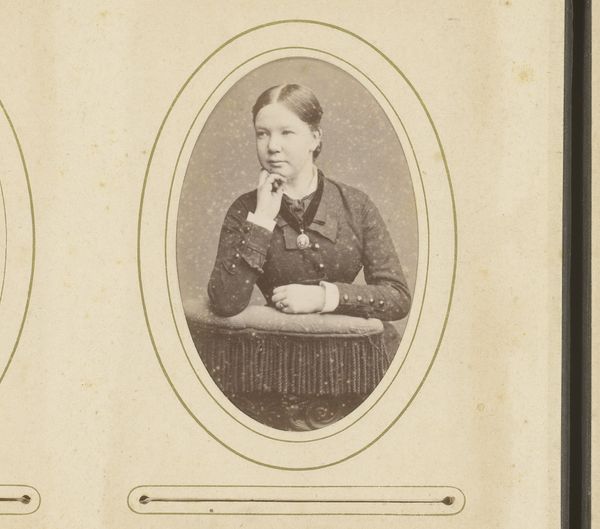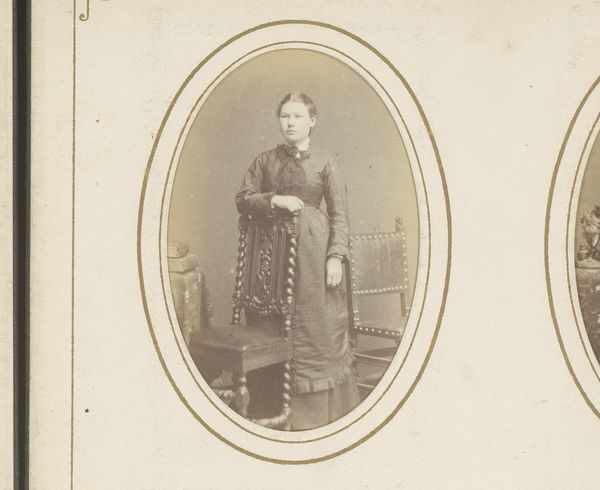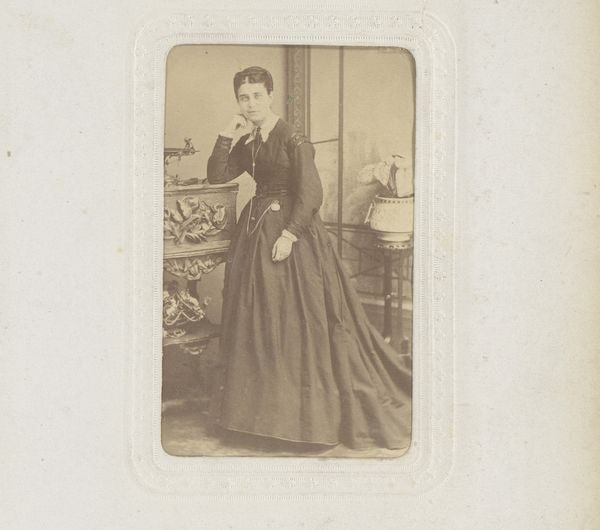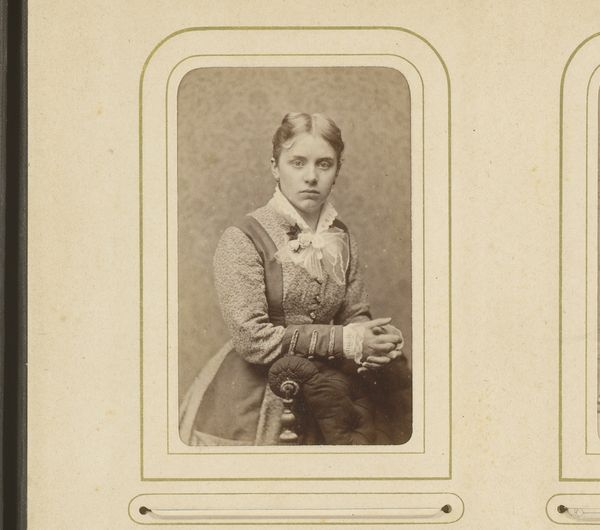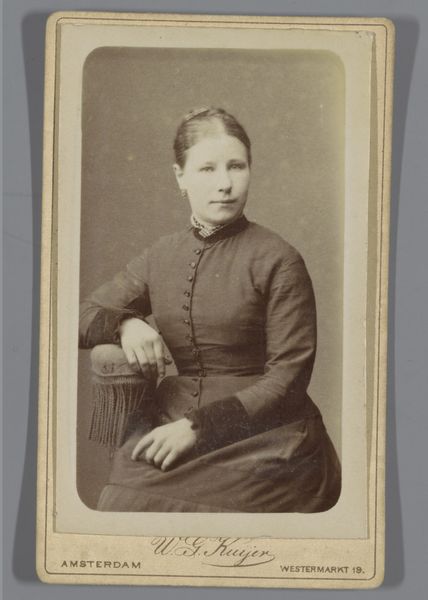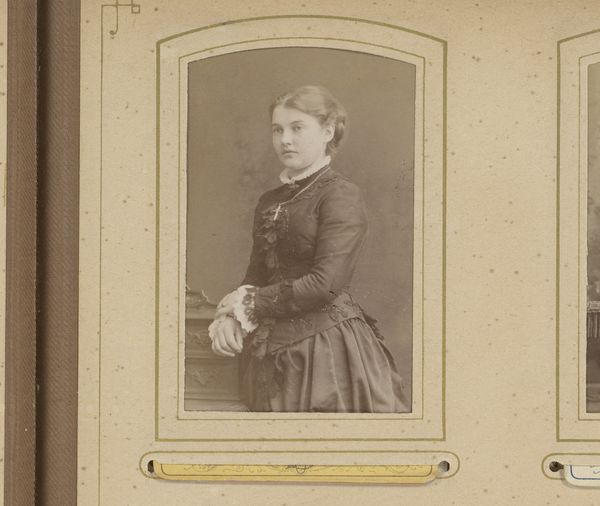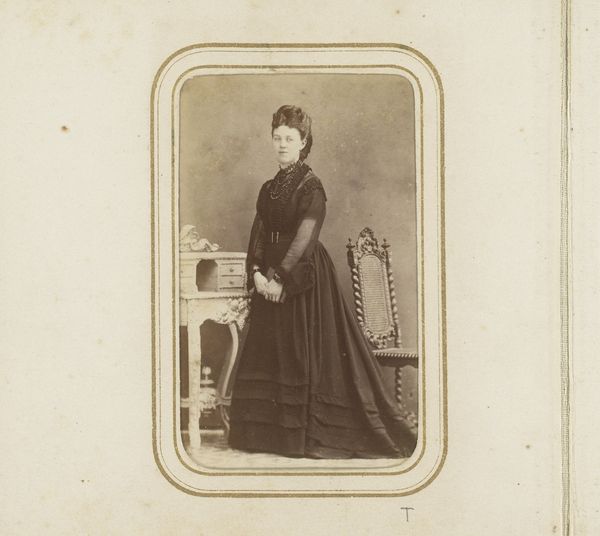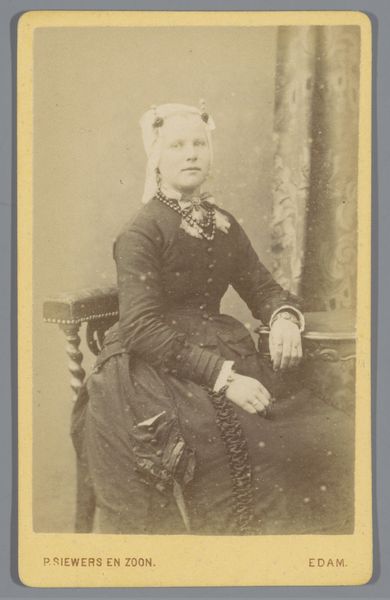
Dimensions: height 83 mm, width 52 mm
Copyright: Rijks Museum: Open Domain
Editor: This is a photograph titled "Portret van Wies Meyer, leunend op een meubel," placing it sometime between 1860 and 1900. The image is lovely, in a muted, antiquated way; her pose strikes me as intentionally formal. What catches your eye when you look at this portrait? Curator: Considering this photograph through a historical lens, several aspects are striking. Firstly, the very act of commissioning a portrait in this era speaks to a certain level of social standing. Photography was becoming more accessible, yet it still held a different weight than it does today. We see the subject, Wies Meyer, positioned in a way that emphasizes propriety and perhaps aspiration, subtly revealing aspects of the cultural values of that time. How does the furniture itself speak to the status or message intended by the photograph? Editor: The ornate furniture definitely suggests wealth or at least a desire to present a certain image. The detail is pretty remarkable considering the limitations of photography back then! It makes me wonder what sort of person she was beyond this formal presentation. Curator: Precisely. Think about the conventions surrounding portraiture during this time. How much of Wies Meyer's "true" self do you think she was able or even permitted to reveal, given societal expectations, versus what aspects were intentionally crafted to project a specific role or identity that benefitted or shaped her public persona? Consider also the role the photographer plays. Were they simply a technician, or did they contribute to constructing the subject's image? Editor: That makes me look at it completely differently, it's like reading a performance. It’s not just a photograph, but also a glimpse into the complex relationship between identity, representation, and society's expectations! Curator: Exactly. Analyzing it this way offers us deeper understanding, appreciating its place within its specific historical context and broader societal structures. Editor: I never thought about it that deeply. It's given me a whole new appreciation for historical portraiture!
Comments
No comments
Be the first to comment and join the conversation on the ultimate creative platform.
